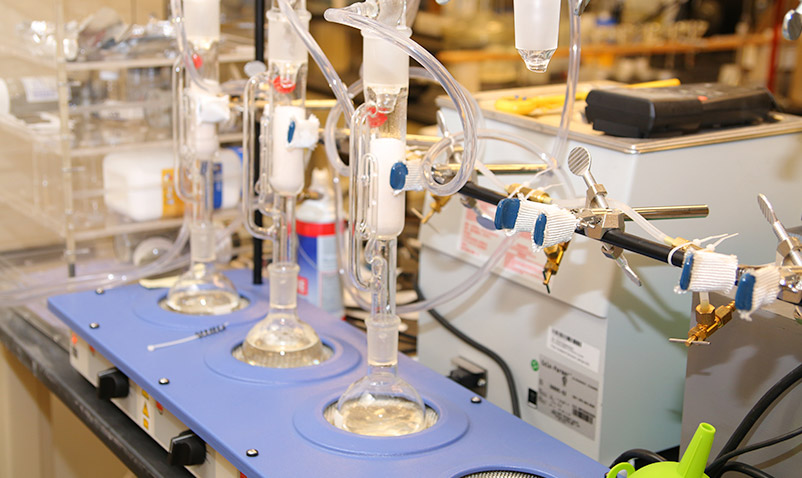In today’s data-driven world, businesses across industries rely on chemical analysis laboratory services to ensure product safety, regulatory compliance, and quality control. But how exactly do these services work?
This post dives into the science and techniques that make chemical analysis possible. From sample preparation to data interpretation, we’ll explore the behind-the-scenes process that enables accurate and reliable results.
Whether you're in manufacturing, food production, pharmaceuticals, or environmental services, understanding this science can help you make smarter decisions.
Quick Overview: The Process at a Glance
Chemical analysis isn’t just about mixing solutions in test tubes—it's a structured, science-based process that involves:
- Sample Collection & Preparation
- Selection of Analytical Methods (e.g., chromatography, spectroscopy)
- Precise Instrumentation & Testing
- Data Interpretation by Trained Chemists
- Reporting & Recommendations for Action
These steps are conducted in accredited laboratories using strict protocols, ensuring accuracy and regulatory compliance.
Want to dive deeper into how it all works? Keep reading!
Step-by-Step: What Happens in a Chemical Analysis Lab?
1. Sample Collection & Preparation
Every analysis begins with one thing: a sample. This could be anything from a food item to a water specimen or raw material.
- Proper handling is critical. Even a tiny contamination can alter results.
- Laboratories often follow ISO/IEC 17025 standards for sample integrity.
- Samples may be ground, dissolved, filtered, or dried—depending on the testing method required.
Pro Tip: Always label samples accurately and store them according to lab guidelines to prevent deterioration.
2. Choosing the Right Analytical Technique
Different techniques serve different purposes. The type of test chosen depends on the material and the information needed.
Common Analytical Methods:
- Chromatography (e.g., HPLC, GC): Separates complex mixtures into components.
- Spectroscopy (e.g., ICP-OES, UV-Vis): Measures interaction between matter and electromagnetic radiation.
- Titration & Gravimetric Methods: Classic techniques for concentration and composition.
Did You Know? Gas Chromatography (GC) can detect parts-per-billion levels of volatile organic compounds in air and liquids.
3. Instrumentation & Testing
High-tech instruments are the backbone of chemical testing. These devices are calibrated regularly and operated by trained technicians.
Examples of lab equipment include:
- Mass Spectrometers – Identify compounds by mass-to-charge ratio
- X-Ray Fluorescence (XRF) – Used for elemental analysis
- Auto-Titrators – Improve precision for acidity and alkalinity tests
Each instrument has a specific calibration curve and detection limit, ensuring precision.
Bold Insight: Even the most advanced instruments are only as good as the people operating them. Training and experience are crucial.
4. Data Interpretation & Quality Control
Once data is generated, it’s validated through a quality assurance process to check for accuracy, consistency, and repeatability.
- Control samples and blanks are often tested alongside real samples.
- Chemists interpret the data using reference standards and statistical software.
- Final results are often reviewed by a second analyst for added assurance.
5. Reporting & Regulatory Compliance
Once testing is complete, a report is issued—often with detailed graphs, tables, and conclusions.
- Reports may highlight whether a sample passes or fails a given standard.
- Data is formatted for easy submission to regulatory bodies such as the EPA, FDA, or TGA.
- Recommendations may be included to guide next steps or corrective actions.
Quick Guide: What Happens When You Need Chemical Testing?
Situation:
Imagine you're launching a new nutritional supplement and need to verify ingredient purity and compliance with Australian safety regulations.
Common Challenges:
- Are your ingredients free from contaminants like heavy metals?
- Can your product pass TGA standards for consumer safety?
- Is the label content verified with real lab data?
How to Solve It:
1. Choose an Accredited Lab: Look for ISO 17025 accreditation to ensure your results are accepted by regulators and retailers alike.
2. Define Your Testing Goals: Do you need a full panel test or just a heavy metals screen? Clear objectives lead to faster, cheaper results.
3. Submit Clean, Properly Stored Samples: Samples must be uncontaminated and labeled clearly. Follow submission guidelines strictly.
4. Review & Act on the Report: Once results are in, review the lab’s recommendations—especially if any parameters are out of spec.
Why It Works:
This approach ensures your product is safe, compliant, and market-ready—backed by scientific analysis and documented results.
Need reliable lab testing for your business? Reach out to a certified lab today for guidance.
FAQs About Chemical Analysis Laboratory Services
Q1: How long does chemical testing usually take?
A: It varies by test complexity. Simple tests like pH or moisture content can take hours, while detailed analyses like pesticide screening may take several days.
Q2: Are these services expensive?
It depends on the type and volume of testing.
- Basic tests: $50–$150
- Advanced instrumentation: $300–$1,000+
- Bulk testing or ongoing contracts usually reduce the per-sample cost.
Q3: Can I trust third-party lab results?
Yes—if the lab is accredited and follows validated methods. Always ask for certifications and inquire about their QA/QC procedures.
Q4: Do labs help interpret the data?
Many do! Quality labs provide clear, concise reports along with expert interpretation and regulatory guidance.
Conclusion: Why It All Matters
Chemical analysis laboratory services are much more than lab coats and microscopes—they’re essential tools for ensuring safety, compliance, and product quality.
By understanding the steps behind the process, you can better select the right services, interpret results, and protect your brand and customers.
Whether you're testing water for contaminants or verifying the nutritional content of a health product, the science behind chemical testing is your most trusted ally.Bottom of Form





Comments